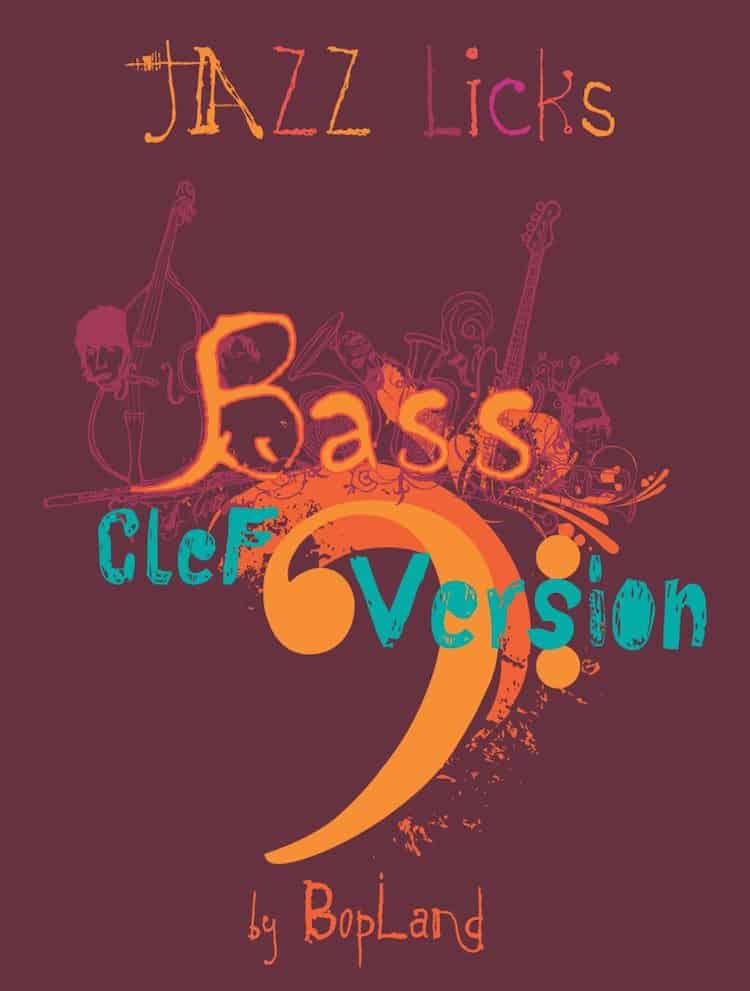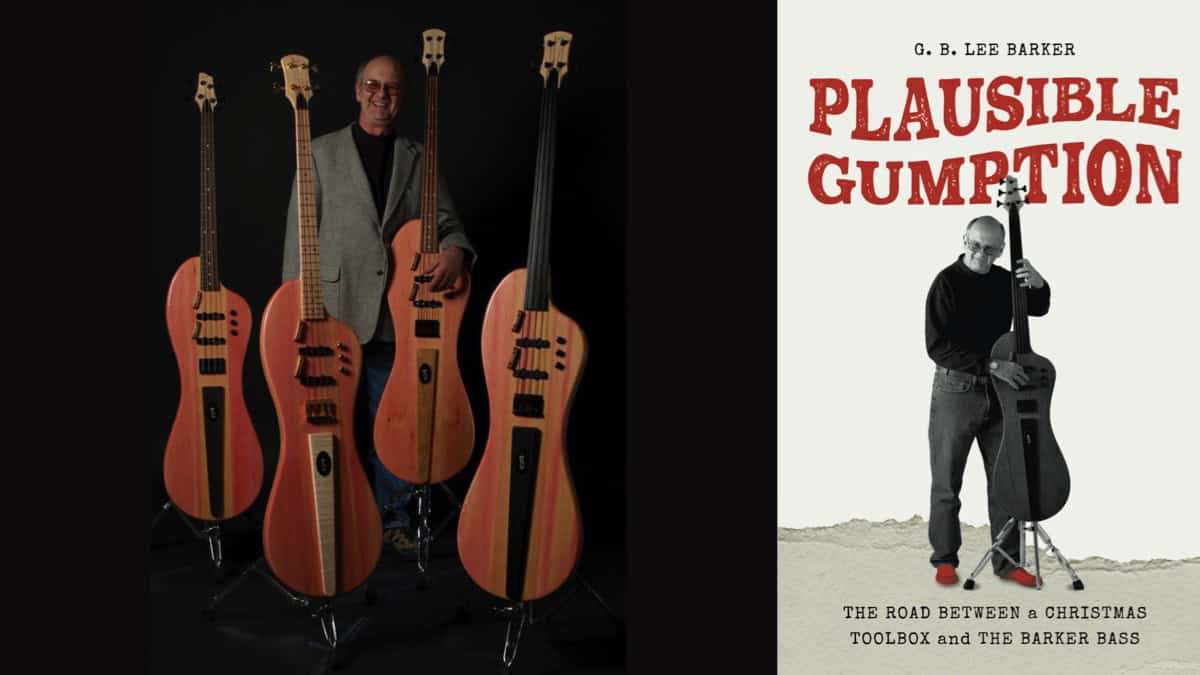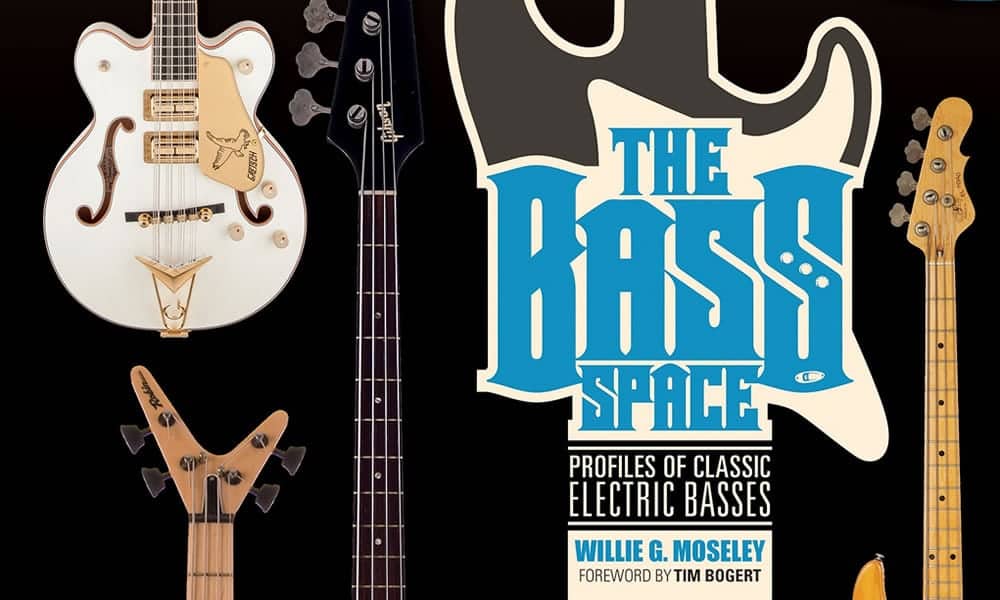Bass Books
Jazz Licks: Bass Clef Version Review

Jazz Licks: Bass Clef Version is 296 pages of improvisational gold for bassists.
A collaborative project led by Nikita Borisenko, the book contains more than 1,500 jazz licks for the more popular chord progressions (2-5-1 and 1-6-2-5) in the jazz repertoire. The licks are written in standard notation and are provided in all keys. The book can provide the aspiring improviser with weeks, if not years, of study.
Published in October 2014, the book features 17 songs so the reader can apply the melodic jazz licks to jazz standards, including such classics as “All The Things You Are,” “The Days Of Wine And Roses,” “My Funny Valentine,” “Someday My Prince Will Come,” “Stella By Starlight,” and “Take Five.”
Author’s intentions
The authors and contributors compiled a large collection of saxophone, brass, guitar and piano licks in treble clef. Rather than simply transpose the licks, the authors took great care in adapting the melodic ideas specifically to the range of the bass.
According to Borisenko, the book concept started more than 10 years ago when he was studying jazz guitar and improvisation at Moscow College Of Improvising Music. He was struggling with improvisation and was not having much success finding method books or learning from the one or two licks he’d find on any particular song.
“There were a few people who knew the secret but there were no easy way to transfer this knowledge from one individual to another,” said Borisenko. “(The process) implied a whole lot of work: Listening and transcribing miles of tape, running through a number of books to discover just a few worthwhile melodic ideas.”
After transcribing many recordings, he observed that music closely resembled physics and math. In his view, “beautiful music obeys certain principles which can be formulated and explained.”
Borisenko believed that scientific approach was missing from other jazz publications and set about to build a knowledge base of jazz licks over common chord progressions. Thousands of licks are now stored in the free online database at www.bopland.org.
Eventually, Borisenko decided to publish the online material into a more convenient and play-ready book.
Using Jazz Licks
“One of the best bits of advice I’ve ever heard about memorizing any material was to split the information into small chunks and chew them one by one,” said Borisenko. “My intention was to create a book which would implicitly incentivize a reader to build his own vocabulary based on those patterns he likes most.”
Derek Jones, bassist for Cirque du Soleil’s KA and adjunct faculty in the bass department at the University of Nevada, Las Vegas, has started experimenting with the book on a handful of his college students. Starting with the first example in the key of C, Jones suggests playing through the 2-5-1 licks as written: seven lines of three measures (one per chord) per line. That starts the reader with seven jazz licks. Jones then recommends mixing up the chords from each of the seven different lines. For instance, play the Dm7 lick from the first line with the G7 lick from the third line and the Cmaj7 lick from the sixth line.
“Instead of seven licks, you now have 343. And that’s just in the key of C,” Jones added. “This is not a book to learn the songs. It’s a book to help you explore and improvise ideas.”
Jones recommend using the book to focus on improving left hand facility as well as practicing dynamics and articulation with the right hand.
“The book is a really good starting point,” said Geoff Neuman, double bassist with the Las Vegas Philharmonic and instructor of instrumental music of Bishop Gorman High School in Las Vegas. “It is up to the student to be creative in how to get the most out of it. Like most jazz educational books, it is up to the musician to create exercises beyond just reading through the book to get the most out of it.”
Neuman advocates approaching the book to with both right and left hand studies in mind. The student should vary fingering options with the left hand as well as experiment with rhythmic and dynamic variations with the right hand — in addition to bowing exercises for the double bassist.
Where to buy
Jazz Licks: Bass Clef Version is currently only available on Amazon.com as a paperback for $10.25.
Bass Books
Interview With Barker Bass’s Inventor and Writer Lee Barker

If you are an electric bass player, this is an exciting time to be alive as this relatively new instrument evolves around us. Some creative individuals have taken an active role in this evolution and made giant leaps in their own direction. Lee Barker is one of these inventive people having created the Barker Bass.
Fortunately, Lee is also an excellent writer (among so many talents) and has recently released his book “Plausible Gumption, The Road Between a Christmas Toolbox and The Barker Bass”. This book is a very fun read for everyone and shares a ton of details about Lee’s life in general, his experiences as a musician, a radio host, and a luthier. Now I am fortunate to have the great opportunity to gain even more insights into this renaissance man with this video interview.
Plausible Gumption, The Road Between a Christmas Toolbox and The Barker Bass is available online at Amazon.com
Bass Books
Ultimate Look at Electric Basses from 1930 to Today

The Bass Space: Profiles of Classic Electric Basses.
The definitive book for lovers of the low-end. Willie G. Moseley, Senior Writer for Vintage Guitar Magazine, profiles more than 100 historic and unique electric bass models from such makers as Alembic, Danelectro, Fender, Gibson, Gretsch, Guild, Hamer, Kramer, Rickenbacker, and many others.
Rare and legendary instruments, from the earliest attempts at amplified basses in the mid-1930s to the cutting-edge instruments of today, are presented in more than 250 color and period photos.
The main feature of this book is the exclusive coverage of historic and one-of-a-kind basses owned and played by such famed musicians as: Bill Black (Elvis Presley), Tim Bogert (Vanilla Fudge), Mark Egan (Pat Metheny Group), John Entwistle (The Who), Paul Goddard (Atlanta Rhythm Section), Bruce Hall (REO Speedwagon), Greg Lake (Emerson, Lake & Palmer), Benjamin Orr (The Cars), Tom Petersson (Cheap Trick), Carl Radle (Derek and the Dominos), Gene Simmons (Kiss), Steve Wariner, and others.
The Bass Space: Profiles of Classic Electric Basses is available online at Amazon.com
Bass Books
Review: The Bastard Instrument, A Cultural History of the Electric Bass by Brian F Wright

I was intrigued when The Bastard Instrument showed up on my desk… let’s dig in!
When we dive into the history of our beloved instrument, the bass, we find roots that go back as far as the 15th century. This instrument was a member of the violin family and was for the longest time, an acoustic instrument. As the years passed and music changed, there was a need for the instrument to evolve and the electric bass was born.
Comparatively, the electric bass is a relatively new instrument with its earliest appearances dating back to the 1930s and it is exciting to be an electric bass player while this history unfolds around us. Fortunately for us and future generations to come, Professor Brian F. Wright has taken on the herculean task of documenting the trajectory of the electric bass with this excellent book.
The Bastard Instrument presents an extraordinary amount of fine details about the instrument itself, the development of the amplification to handle its output, the pioneers that dared play it, the rapidly evolving music that flourished because of its presence and so much more.
When I first started reading this book, I noticed that it felt a tad academic, like a textbook (it might be one someday) or a doctoral thesis, but to present all this information accurately, this approach is more than appropriate. Another detail that might be a bit of a spoiler is that the book only gets us up to the late ’60s. I was left wanting more as we know that so much has happened in the bass world since that time frame; I hope there is another volume in the works to get us up to the present!
All in all, “The Bastard Instrument, A Cultural History of the Electric Bass” is a must-read for all of us who play electric bass and understand its essential place in music.
I found that there was a lot that I already knew but also quite a bit that I was unaware of. I believe that to know and understand where you are, you must know the history of exactly how you got here.
Highly recommended.
The Bastard Instrument is available at Amazon.com (beginning July 2024)
Bass Books
Review: The Bassist’s Complete Guide to Injury Management, Prevention and Better Health

The Bassist’s Complete Guide to Injury Management, Prevention and Better Health
I have often thought that it would be great if the doctors who delivered us as newborn babies provided us with a user manual to help us navigate through life in the best way possible. Now Dr. Randall Kertz, D.C. has produced a manual specifically designed to address the many possible afflictions plaguing us bass players.
Many of you will remember volumes 1 & 2 of this book and our first review in 2007. The new complete guide combines the two volumes and features over 20 pages of new material including interviews, techniques, and conditions.
If you play bass, you can read this book cover to cover and walk away with a ton of relevant and helpful knowledge. Another option is to search out issues relevant to you specifically (I found quite a few of my own with helpful options). This is possible because the book is very nicely organized into six chapters that address Pain, Conditions, Techniques, Road Issues, Inspirational Q&A with some of the biggest names in the bass community (too many to list here) and finally How to get relief.
All said, this book is essential if you play either electric or upright bass to the point where they should issue you one when you get that first bass in your hands.
Lastly, if you have this book and you have specific questions, Dr. Kertz is readily available through his website, www.drkertz.com. As if that was not enough, he has a wealth of knowledge you can find right here on our website at bassmusicianmagazine.com/author/randallkertz
Get this book… Live long and play bass well into the years! Available on Amazon.com
Bass Books
The Bassist’s Complete Guide to Injury Management, Prevention & Better Health

The Bassist’s Complete Guide to Injury Management, Prevention & Better Health is now available!

A compilation of Volumes 1 & 2 of the acclaimed Bassist’s Guide with 20+ pages of new interviews, techniques, and conditions, The Complete Guide puts everything in one convenient place.
Available at Amazon.com and from our friends at Bassline Publishing
Follow Dr. Kertz’s Bass Player Health at Bass Musician Magazine





















